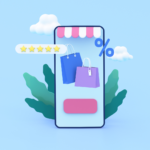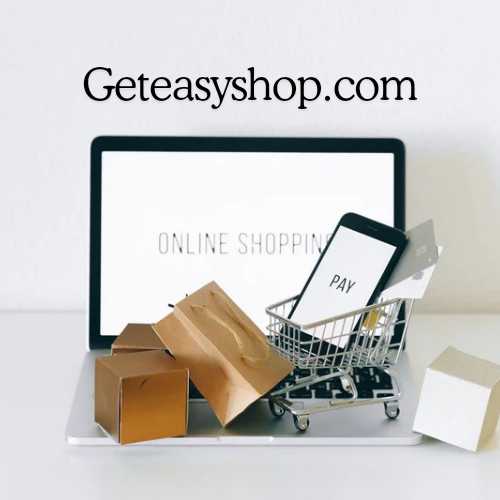From Dream to Digital: A Complete Guide on How To Start An E-commerce Business
1. E-commerce Basics

1.1. E-commerce: An explanation and its significance
Hello Future E-Commerce Super Star. Well, so here we are going to talk about one very best topic e-commerce. At the most basic level, e-commerce is online purchasing and selling.
Think of it as a 24-hour brick-and-mortar store that people can browse, shop and purchase from whilst sitting in their armchair wearing their pajamas!
Why does it matter? First of all, since most everyone is doing more online shopping than ever before.
It is easy, frequently cheaper too and you can get what ever u want with just a click. To businesses, that is appealing as it means the potential to reach many customers without having a physical store front. Pretty cool, right?
Readmore:How to start digital marketing
1.2. Ecommerce Business Models
So, what are the types of e-commerce businesses you can begin?
- Business-to-Consumer (B2C) — The most popular type of e-commerce is B2C. This is direct-to-consumer sales and business models similar to Amazon.
- Business to Business (B2B): This is when a business sell their goods and/or services with another. For example, consider companies that provide office supplies to other corporations.
- C2C — Consumer-to-Consumer: eBay, anyone? Yeah, that’s C2C. Person sell things to person
- Consumer-to-Business (C2B): Since the name suggests, through which an individual consents to provide products or services towards the company. This is usually how freelancer platforms work as well.
There are pros and cons to each of them, so consider which works the best for your purposes!
2. An Overview of an E-commerce Venture
2.1. Market research and niche identification
So, you are keen on launching your e-commerce business. But hold your horses! There is a bit of research to do before you get started.
Fewer companies are getting fooled into building products that people merely like, and instead do the hard stuff: The market research to figure out what it is that someone will actually pay for.
Take a look at what exists (or doesn’t!) now. What are the other online stores offering? What is getting people buzzing on Instagram? You may even survey your friends and family on their own online shopping preferences.
The nicest of the niche is crucial in this arena. That would be like saying you won your little corner of e-commerce.
Perhaps you are passionate about green products and have an idea that solves a need left-handed guitar players. It can be anything as long it is in your interest and people also need that. Next:What is content writing
2.2. Business plan & financial projections
I know, I know. Business plans sound boring. But they’re so good I promise! A roadmap for your business if you will. It enables you for some inquiry like;
- Exactly what you are going to offer
- Who your customers are
- The method by which you’ll get a hold of themQuestion * What is the minimum investment needed
- When you’ll start making your money back
As long as its your first try, it will be okay. The business plan will morph regularly as you learn more about the market and customers.
As ror financial projections, they are in fact a bit of forecasting how much money your business will make (and spend) in the future. Be realistic here. You always want to error on underestimating your income, or over estimating your expenses. This way, if it doesn’t quite go according to plan you have an idea of what can and cannot be done.
3. Building Your Online Store
3.1. Finding the best e-commerce platform
Ok cool, now it’s getting exciting – building your store online! Step 1: Choose Your E-Commerce Platform This is similar to choosing the foundation of your home, you want something strong and able.
Shopify, WooCommerce and BigCommerce are just a few of the possibilities. They both have pros and cons of course. Key Conclusions:
- How easy is it to use?
- How much does it cost?Depending on the features it provides –
- Will it scale with your business?
The point is, just do not rush with this decision. You might even experiment with a couple different platforms to find the one for you.Readmore:How to become successful person in life
3.2. Developing an intuitive website
When you have decided with your platform, make sure that the site is beautifully designed along with working without any glitch. Just like your store front window is, so too can be your website. You want her to see themselves in there, and be desirous of coming inside for a closer look.
This one, however, is on the sleek design of simple and easy to navigate websites.
- Keep it simple and clean. Do not burden the visitors with excess information.
- Navigation should be smooth. The faster people can find what they want, the better.High Resolution Images for products.
- Design for mobile devices First and foremost, your site must look attractive on a small screen. A good chunk of people buy from their phones nowadays anyway!Include detailed descriptions of your products and include a clear contact page.
Clearly, your website needs to be an enjoyable place for visitors and a one-stop shop. B) If they enjoy themselves, the odds increase that those guests are going to return again(read bring in more cash).
4. Inventory Sourcing & -management
4.1. Locating legitimate suppliers and manufacturers
Setting — up Online Store okay, so you have created your online store site what will probably help or build a large client base was struck by first and the largest question is What to Offer Good suppliers/ manufacturers are key. You do want quality products that your customers will love, after all.
Readmore:Morning workout benefits
Ways You Can Use to Search for a Supplier
Alibaba or ThomasNet-type online directories
Trade shows in your field*
- Recommendations by other business owners
- Regional craft manufacturers, or elseighborhood artisans (It depends of which you’re selling.)
Do not hesitate to ask questions of people you are approaching for supplies. Length of Operation Can they then scale with you as your business grows? What’s their return policy? The more you understand or know the better off your choice can be.
4.2. INVENTORY MANAGEMENT & FULFILLMENT
So inventory sucks and no one likes doing it, but trust me: this is imperative stuff. Not having any of your best-selling item for an important sale or overstocking something that is not moving quickly, you wish none of this to happen.
There is no shortage of inventory management systems to track what you have on hand, as well as orders and shipments. Just because, most of the e-commerce platforms have default inventory management or linkage with an external system know useful in-depth.
What a Good Inventory Management System Should Do
Granily  primarily Features below: * Real time stock level tracking.
primarily Features below: * Real time stock level tracking.
Check before you leave the house if it´s something important to have with your phones location(tm).
Assist you to predict your future inventory requirements.
- Connect to sales & shipping systems
Good Inventory management is known to be cost-effective and it ensures you provide your customers with a good experience because they will always get what they want.
5. How to Market Your eBusiness
5.1. Creating a full digital marketing strategy
So there you are, brand new store all set up with products live and kicking. Well, now it is time to communicate who you are! This is where digital marketing becomes an important part.
For example, a solid digital marketing plan may include:
Search Engine Optimization (SEO) — this makes you visible to people looking for the products that your website sells.
- Pay-Per-Click Advertising (PPC) – This is when ads are placed at the top of search results, on various sites etc.
- Email Marketing: Stay in touch with your customers, notify them of new products or sales.Content Marketing — this could be blogs, videos or infographics that offer help to your customers and allows you become the authority in your industry.
As I always say, marketing is all about the right message to the right people at the right time. Be not afraid and try various approaches best suited for you business.
Readmore:Most Demanding courses in future
5.2. The use of social media and content marketing.
It offers you a platform to interact with your audience and showcase what it is that you have more than they need or actually know. Every business is different and some social media platforms work better for certain industries than others, so you may need to test the waters.
Below are some Social Media uses, you can take idea from.
Share your beautiful product photographic on Instagram
Create a community around your brand using Facebook
◦ Quick tips, behind-the-scenes peeks via TikTok or Twitter
- Pinterest boards that highlight your wares and give customers ideas
Content marketing and social media go together. This will be the top tip for inbound marketing, as it is simple: write awesome posts that your target MIMEs want to read and watch. These could be how-to guides, product comparison or even fun quizzes which are related to your products.
You need to do this religiously and with realness. Be yourself be creative this is fun!
Starting an e-commerce business Remember — a Journey. With determination and a willingness to learn, you will have lots of ups and downs on the way) your dream into reality.
Readmore:Online business ideas for beginners


